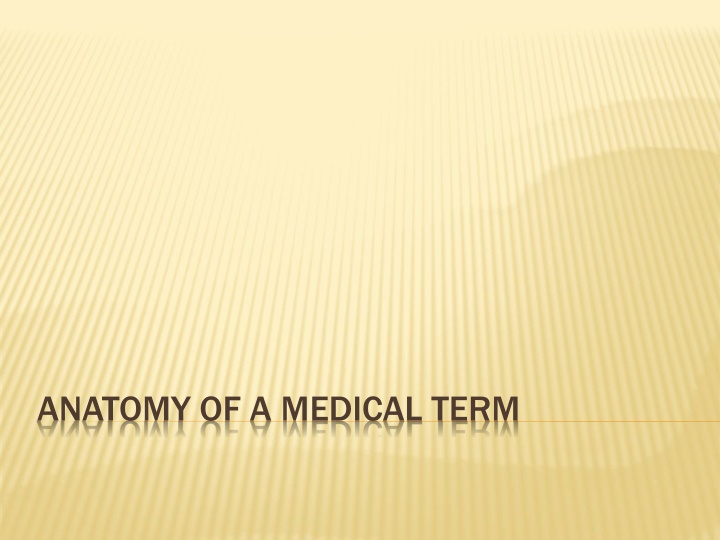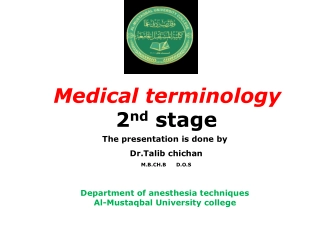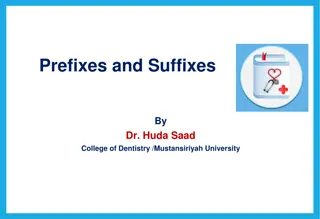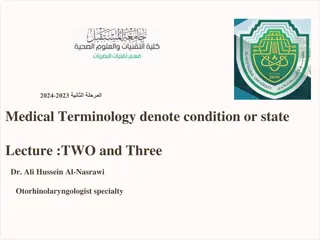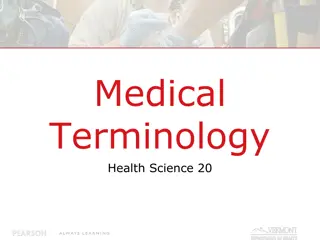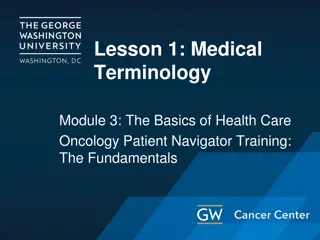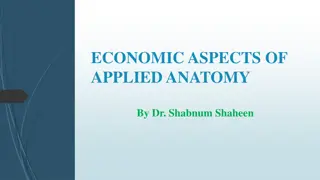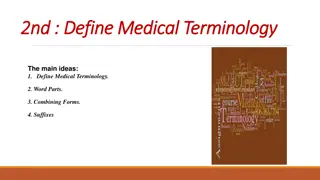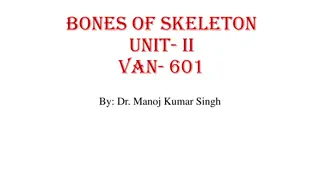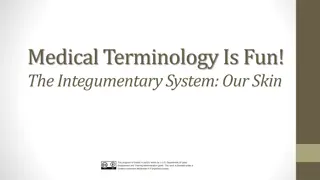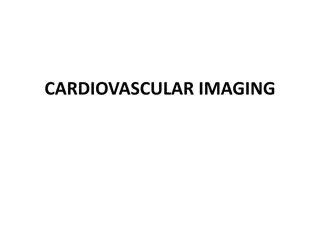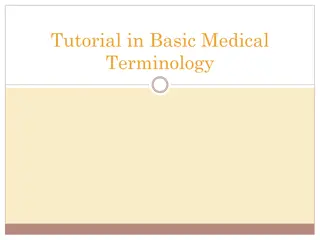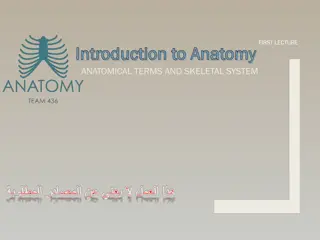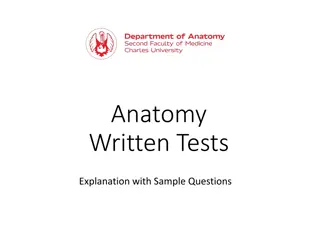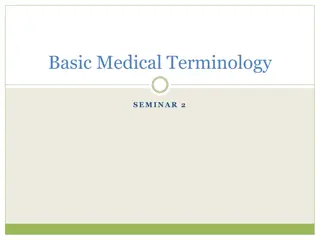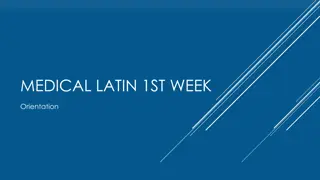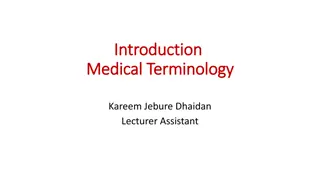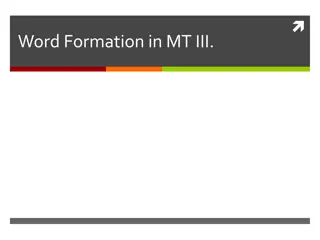Anatomy of Medical Terminology Simplified
Many medical terms are composed of word parts like prefixes, roots, combining forms, suffixes, and directional prefixes. Understanding these components can make learning medical terminology easier. Prefixes indicate number, location, time, and status; roots provide essential meanings; suffixes denote procedures, conditions, diseases, or disorders. Learn contrasting prefixes like A-, An-, Ab-, Ad-, Anti-, Dys-, Eu-, Endo-, Ex-, Ecto-, Hyper-, Hypo-, Inter-, Intra-, Poly-, and Oligo-. Explore directional prefixes and surgical suffixes to enhance your medical vocabulary.
Download Presentation

Please find below an Image/Link to download the presentation.
The content on the website is provided AS IS for your information and personal use only. It may not be sold, licensed, or shared on other websites without obtaining consent from the author.If you encounter any issues during the download, it is possible that the publisher has removed the file from their server.
You are allowed to download the files provided on this website for personal or commercial use, subject to the condition that they are used lawfully. All files are the property of their respective owners.
The content on the website is provided AS IS for your information and personal use only. It may not be sold, licensed, or shared on other websites without obtaining consent from the author.
E N D
Presentation Transcript
Many medical terms are composed of word part combinations. Recognizing these word parts and their meanings simplifies learning medical terminology. PREFIX: word part found at the beginning of a word. * number * location * time * status
Root: word part that gives the essential meaning of the word * usually a body part/organ Combining vowel: single vowel, usually an o that is added to the end of a root to make the word easier to produce. Combining form: combination of the root and combining vowel Suffix: word part found at the end of the word. * procedure * condition * disease * disorder
Contrasting Prefixes A: without A: without or no An: without or no An: without or no or no Ab: away from Ad: toward Anti: against Dys: difficult, painful, bad Eu: good, easy, normal Endo: within or inside Ex: without, out of Ecto: outside Hyper: elevated, higher or more than normal Hypo: depressed, lower or less than normal Inter: between Intra: within Poly: many or excessive Oligo: scant or little
Pre: before Sub: below, under or less Post: after Super or supra: beyond or excessive DIRECTIONAL PREFIXES Prefix Prefix Meaning Meaning Epi Upper or upon Extra Outside Hyper Above , increased, or more than normal Below, under or decreased Hypo Infra Below or beneath Inter Between Intra within
Prefix Prefix Meaning Meaning Meta Per Sub Super Beyond Throughout Below, under or deceased Above, increased or more than normal Above, increased, or more than normal Through or across Above, increased, ore than normal Supra Trans Ultra
SUFFIXES Pertaining To ac al an ar ary eal ic ine ous tic
Surgical Suffixes Suffix Suffix Meaning Meaning -ectomy -pexy -plasty -ostomy -otomy Surgical removal Suture to stabilize Surgical repair Surgically created opening Cutting into
Procedural Suffixes Suffix Suffix Meaning Meaning -centesis Surgical puncture to remove fluid or gas Record of Instrument that records Procedure that records Separation or breakdown Instrument to visually examine Procedure to visually examine inside the body treatment -gram -graph -graphy -lysis -scope -scopy -therapy
Double R suffixes Suffix Suffix Meaning Meaning -rrhaiga or rrhage -rrhaphy -rrhea -rrhexis Bursting forth To suture Flow, discharge rupture
Conditional and Structural Suffixes Suffix Suffix Meaning Meaning -algia and dynia -itis -malacia -megaly -osis -pathy -sclerosis -um pain Inflammation Abnormal sofenting Enlargment Abnormal condition Disease Abnormal hardening Structure
Analyzing Medical Terms 1. Dissect: analyze the word structurally by dividing it into its basic components 2. Begin at the end: After dividing the word into its basic parts, define the suffix first, the prefix second and then the root. If there are two roots, divide each one and read them from left to right. 3. Anatomical order: Where body systems are involved, the words usually are built in the order in which the organs occur in the body. The order of the word parts in a medical term may also represent the order of blood flow through organs
